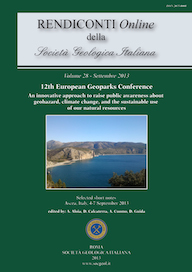
Aspiring Kula Volcanic Geopark - Earth Heritage Protection and Promotion
Erdal Gumus (a) & Nikolas Zouros (a)
(a) Department of Geography, Aegean University of Greece, University Hill, GR81100, Lesvos, Greece. E-mail: egumus@geo.aegean.gr
DOI: https://doi.org/
Volume: 28/2013
Pages: 82-84
Abstract
The Kula Volcanic Geopark is located in Western Anatolia within Manisa Province. The great Greek Geographer Strabo (63 BC-24 AD) 2 thousand years ago named Kula as Katakekaumene (fire born) in his majestic book “Geographica”. The “Kulaite” was named after Kula basalts by H.S. Washington (1894; 1900). Kula Volcanic Geopark rests on regionally metamorphosed crystalline rocks (gneiss, schist and marble) of Menderes Massif and ophiolitic mélange of ?zmir-Ankara Zone.
The Kula volcanism, which is one of the youngest in Turkey, exhibits three volcanic phases from 1.7 Ma ago up to prehistoric eruptions. The Kula Volcanic Geopark covers an area of 300 km2 representing more than 200 million years of earth history. The area is characterised by outstanding volcanic structures of 8 spatter cones, 5 maars and 79 small monogenic cinder cones aligned through a fissure which created series of shallow but extensive basaltic lava flow about 2.3 km3 (?en et al., 2001).
Keywords
Get Full Text